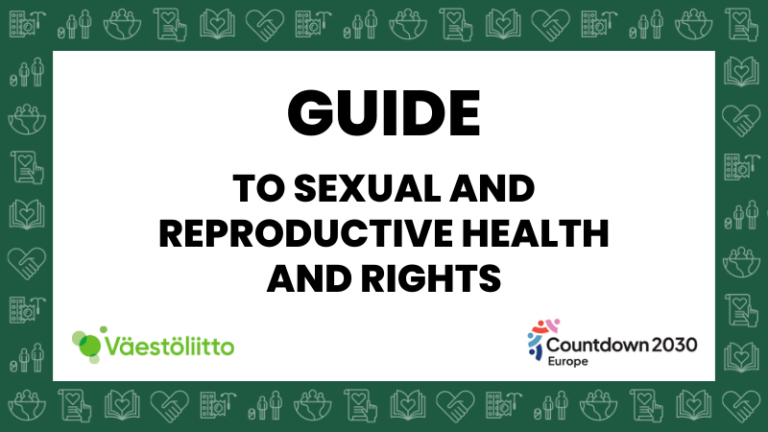Guide to Sexual and Reproductive Health and Rights
This material is created to provide information on what Sexual and Reproductive Health and Rights (SRHR) mean, why it is important for sustainable development and how it is interconnected with human rights, gender equality, education, health, climate and the overall achievement of Sustainable Development Goals.
SRHR is a broad matter. This material focuses on certain thematic focus areas, thus does not introduce an exhaustive list of all of the aspects of SRHR. The goal is to give a short introduction to some of the most important topics, and there is a list under each topic where you can find additional information.
The material is created especially for Finnish civil servants all around the world, and especially the ones working in developing countries, related to development issues, human rights and gender equality, to ensure that they have basic knowledge on SRHR. However, this material is for everyone who are interested in learning more about SRHR.
Julkaisun tiedot
| Julkaisija | Väestöliitto |
|---|---|
| Kirjoittaja | Väestöliitto |
What are Sexual and Reproductive Health and Rights?
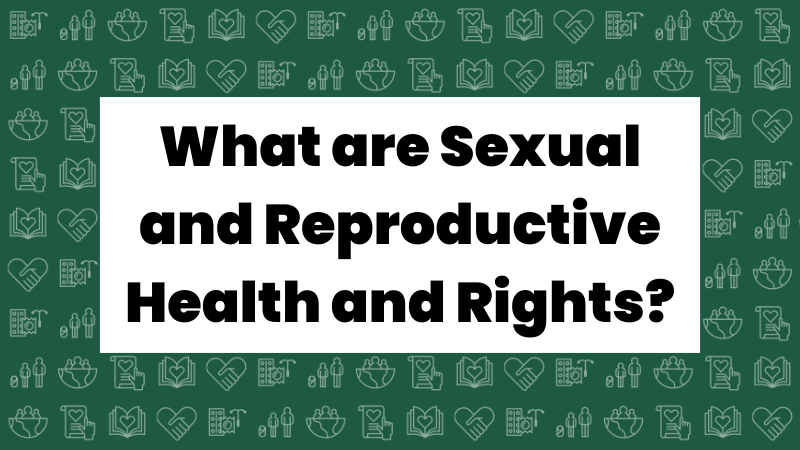
In 1994, the International Conference on Population and Development (ICPD) formally recognized that reproductive rights were linked to human rights. In Cairo Conference, with the adaption of the Programme of Action, brought a sharper focus on women and introduced a new concepts such as sexual and reproductive health and reproductive rights. The conference achieved consensus on key issues such as universal access to education, reduction of infant, child and maternal mortality, and access to reproductive and sexual health services, including family planning.
Advocating for and investing in Sexual and Reproductive Health and Rights (SRHR) is both morally and practically sound. Politically, legally, socially, and economically, it stands as a crucial endeavor. Not only does it preserve lives and enhance well-being, but it also plays a pivotal role in upholding human rights, diminishing poverty and discrimination, fostering gender equality, empowering vulnerable populations, and advancing sustainable development.
“Sexual and reproductive health is a state of physical, emotional, mental and social well-being in relation to all aspects of sexuality and reproduction, not merely the absence of disease, dysfunction or infirmity. Therefore, a positive approach to sexuality and reproduction should recognize the part played by pleasurable sexual relationships, trust and communication in promoting self-esteem and overall well-being. All individuals have a right to make decisions governing their bodies and to access services that support that right.” Guttmacher-Lancet Commission report, Accelerate progress, Sexual and Reproductive Health and Rights for all, available at Guttmacher-Lancet Commission report.
Ensuring everyone’s access to SRHR requires a holistic approach, taking into account the different sectors and aspects contributing to SRHR. It is important not to ignore the role of men and other genders in advancing the agenda on SRHR.
Based on these international standards, Väestöliitto has divided sexual rights into seven different rights. See the definition below:
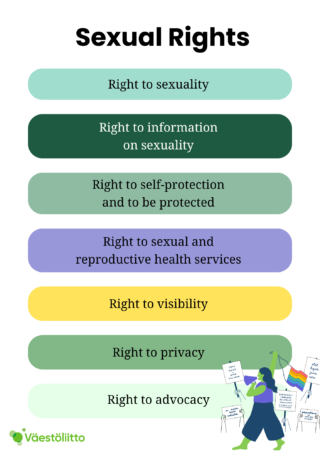
Read more:
State of World Population (UNFPA 2024)
Sexual and reproductive health and rights: infographic snapshots (WHO 2022)
Key SRHR topics

Sexual and Reproductive Health and Rights (SRHR) is a broad concept that interlinks different aspects of people’s personal lives but also affects the society around them.
This section focuses on key SRHR topics and does not aim to provide an exhaustive list of all the aspects of SRHR. The goal is to give a brief introduction to some of the key topics to provide an overview of SRHR. SRHR has a significant impact on various aspects of life, such as an individual’s ability to educate and work, to reproduce or not, to have close relationships, and to have power over their own body. Realizing SRHR also has an impact on the achievement of the Sustainable Development Goals. Additionally, some of these topics are increasingly facing opposition. Ensuring access to SRHR for everyone requires a holistic approach that takes into account the different sectors and aspects contributing to SRHR.
Abortion
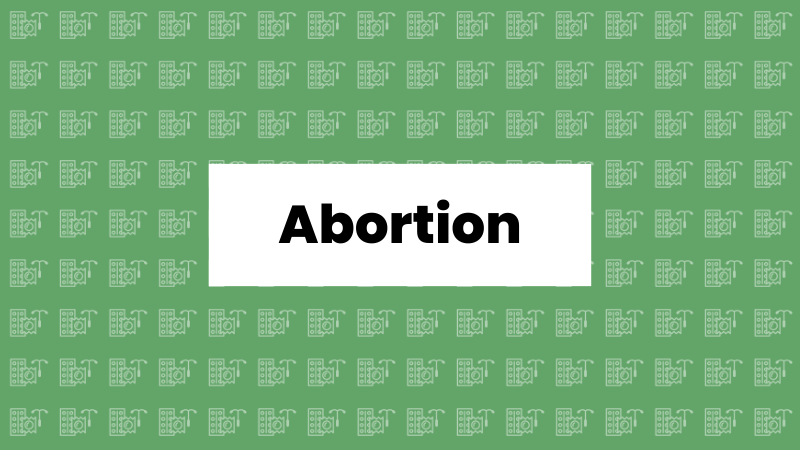
Around 73 million induced abortions take place worldwide each year. Six out of 10 (61%) of all unintended pregnancies, and 3 out of 10 (29%) of all pregnancies, end in induced abortion.
Access to safe abortion services is a human right. Under international human rights law, everyone has a right to life, a right to health, and a right to be free from violence, discrimination, and torture or cruel, inhuman and degrading treatment. Human rights law clearly spells out that decisions about your body are yours alone – this is what is known as bodily autonomy. Forcing someone to carry on an unwanted pregnancy, or forcing them to seek out an unsafe abortion, is a violation of their human rights, including the rights to privacy and bodily autonomy.
Evidence shows that restricting access to abortions does not reduce the number of abortions that take place. In fact, restrictions are more likely to drive women and girls towards unsafe procedures. In countries where abortion is most restricted, only 1 in 4 abortions are safe, compared to nearly 9 in 10 in countries where the procedure is broadly legal.
When abortion is carried out using a method recommended by WHO, appropriate to the duration of the pregnancy and assisted by someone with the necessary information or skills, it is a simple and extremely safe procedure.
Tragically, however, only around half of all abortions take place under such conditions, with unsafe abortions causing around 39 000 deaths every year and resulting in millions more women hospitalized with complications. Most of these deaths are concentrated in lower-income countries – with over 60% in Africa and 30% in Asia – and among those living in the most vulnerable situations.
Unsafe abortions are defined by the World Health Organisation (WHO) as “a procedure for terminating an unintended pregnancy carried out either by persons lacking the necessary skills or in an environment that does not confirm to minimal medical standards, or both.” According to the WHO:
- Around 45% of all abortions are unsafe, of which 97% take place in lower-income countries.
- Unsafe abortion is a leading – but preventable – cause of maternal deaths and morbidities. It can lead to physical and mental health complications and social and financial burdens for women, communities and health systems.
- Lack of access to safe, timely, affordable and respectful abortion care is a critical public health and human rights issue.
Restrictive abortion laws cause distress and stigma, and risk constituting a violation of human rights of women and girls, including the right to privacy and the right to non-discrimination and equality, while also imposing financial burdens on women and girls. Regulations that force women to travel to attain legal care, or require mandatory counselling or waiting periods, lead to loss of income and other financial costs, and can make abortion inaccessible to women with low resources.
To act on growing preferences for smaller families and for better control over the timing of births, people need improved access to modern contraceptives and comprehensive sexuality education. Levels of unmet need for modern contraception are much higher among single, sexually active women than among in-union women because stigma continues to impede single women—especially adolescents—from getting contraceptive counselling and services.
Deciding when and how many children to have is a fundamental human right, the benefits of which reverberate at every level—each individual, their family and society as a whole.
Read more:
Guttmacher Lancet Institute: Unintended Pregnancy and Abortion Worldwide
Comprehensive Sexuality Education
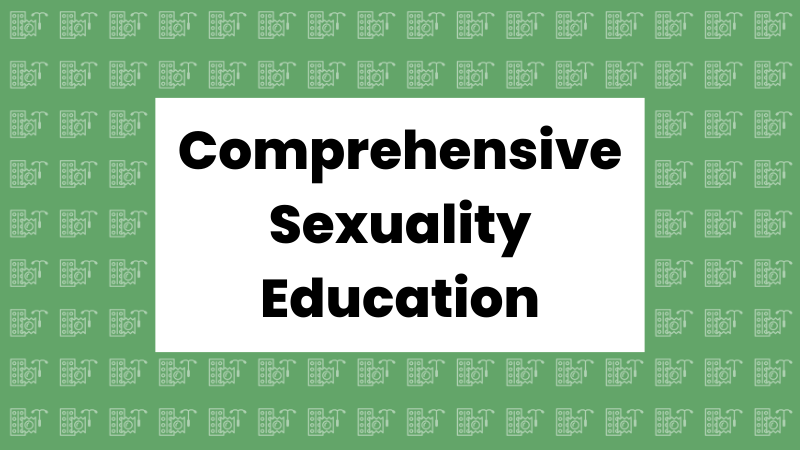
Comprehensive Sexuality Education (CSE) takes a holistic approach to sexuality. It provides children, youth and adults with the knowledge, skills, attitudes and values that they need to experience their sexuality in a safe and satisfactory way – physically and emotionally, individually and in relationships. CSE covers various topics such as the body and sexuality, relationships and feelings, reproduction and pregnancy, STIs, boundaries, gender and sexual orientation, sex and the media, and sex and society.
Comprehensive Sexuality Education (CSE) Enables People to Protect their Health, Well-being and Dignity
According to the “Comprehensive Sexuality Education: Advancing Human Rights, Gender Equality and Improved Sexual and Reproductive Health” (UNFPA) comprehensive sexuality education must do the following:
- Foster respect for human rights and diversity
- Encourage critical thinking skills and young people’s participation in decision making
- Nurture attitudes that promote gender equality and inclusion
- Adapt to suit the age, culture and needs of young people
- Communicate a positive, life-cycle approach to sexuality
- Contain scientifically accurate information
- Offer a safe and healthy learning environment
- Include participatory teaching methods to help strengthen communication skills and decision-making abilities
- Address gender inequality, vulnerabilities, exclusion and human rights violations, including gender-based violence and sexual abuse
Read more:
United Nationas Human Rights: A Compendium on Comprehensive Sexuality Education
Equality and self-determination
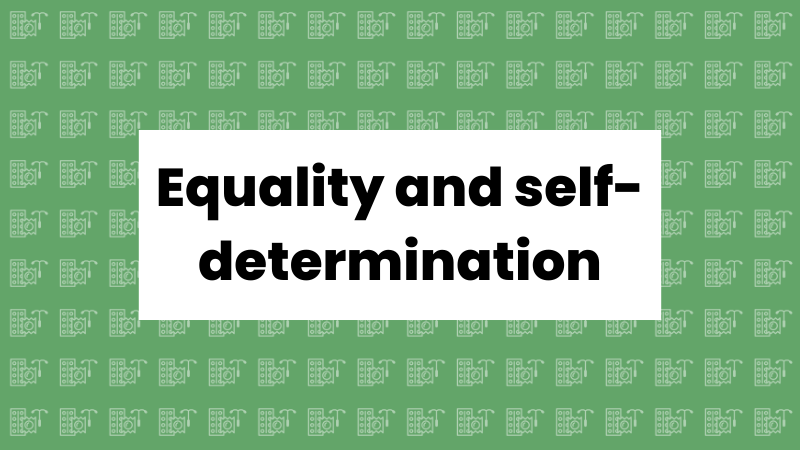
Gender equality and the empowerment of girls and women will not be possible without the realization of sexual and reproductive health and rights. For women and girls to lead healthy lives, and to be free to participate in social, economic and political life, they need universal access to quality services, information and education, and conditions that allow them to realize their sexual and reproductive rights.
Sexual and reproductive health and rights are critical for women and girls to open doors to opportunities, prevent violence and change power relations in their lives, and to have healthy lives without HIV or other STIs. On these grounds alone, they must be considered priority interventions. Sexual and reproductive health and rights are important rights in themselves, but can also magnify possibilities to empower girls and women and to achieve gender equality.
There are many barriers to sexual and reproductive rights, including obstacles in accessing health services, information and education. Underlying these problems is discrimination. Especially women and girls and people from marginalized groups, such as persons with disabilities, gay men, lesbian women, trans or gender-diverse persons, persons from so called “lower” castes, people living in poverty, or minorities, face severe challenges in accessing their sexual and reproductive health and rights.
Read more: Amnesty, Sexual and reproductive rights
Sexual and Reproductive Health and Rights – the key to Gender Equality and Women’s Empowerment
Report by IPPF (2015) is intended for advocates and decision makers to help them champion sexual and reproductive health and rights in advancing the empowerment of girls and women and to achieve gender equality. The report examines the links between sexual and reproductive health and rights and gender equality. It explores the different pathways of empowerment that girls and women experience and analyzes how these pathways are affected by sexual and reproductive health and rights
The report focuses on three areas and their links with sexual and reproductive health and rights as well as identifies ways in which these links contribute to empowerment experienced by girls and women. The three focus areas are:
1. Equality in social development
2. Economic participation
3. Participation in political and public life
UNFPA and Gender Equality
Women and girls are still much more likely than men to be poor and illiterate. They have less access to property ownership, credit, training, and employment. Women are far less likely than men to be politically active and more likely to experience domestic abuse and other forms of violence.
Gender equality will be achieved only when women and men enjoy the same opportunities, rights and obligations in all spheres of life. Gender equality demands the empowerment of women, with a focus on identifying and addressing power imbalances and giving women more autonomy to manage their own lives. Women’s empowerment affects the whole family and this will often have a ripple effect on the future generations.
Key issues for women’s empowerment include: reproductive health and economic, educational and political empowerment.
Read more: UNFPA and Gender Equality
Family Planning

Family planning (FP) is an essential part of sexual and reproductive health and rights as it allows people to achieve their desired family size and determine the spacing of their pregnancies through the use of different contraception methods. Access to safe, voluntary family planning is a human right, and central to achieving gender equality and reducing poverty.
Access to Safe, Voluntary Family Planning is a Human Right
Everyone should have access to a wide variety of modern and safe contraceptive methods (hormonal contraception, IUDs, condoms, sterilization) that are suitable for them. This will effectively protect people from unintended pregnancies and STI’s and safeguard their well-being and autonomy, thus enabling sexual pleasure.
However, worldwide there are circa 250 million women who want to avoid pregnancy but are not using any modern contraceptive methods due to various reasons, such as lack of access to information or services, lack of support from their partners, or lack of financial means to pay for the services and methods.
Access to family planning decreases the number of abortions. However, in developing countries there are several family planning service gaps due to supply shortages, lack of health care professionals and ineffective health care systems, restrictive policies and cultural beliefs against family planning. Therefore, it is essential to strengthen health care systems by building health care workers’ family planning counseling skills and tools to everyone, and especially to vulnerable groups (adolescents, unmarried, sexual and gender minorities, sex workers). It is also important to integrate family planning and SRHR in a broader sense to health care service delivery to increase access and decrease the stigma of seeking SRHR services.
Read More: UNFPA and Family Planning
Sexual and Gender Based Violence
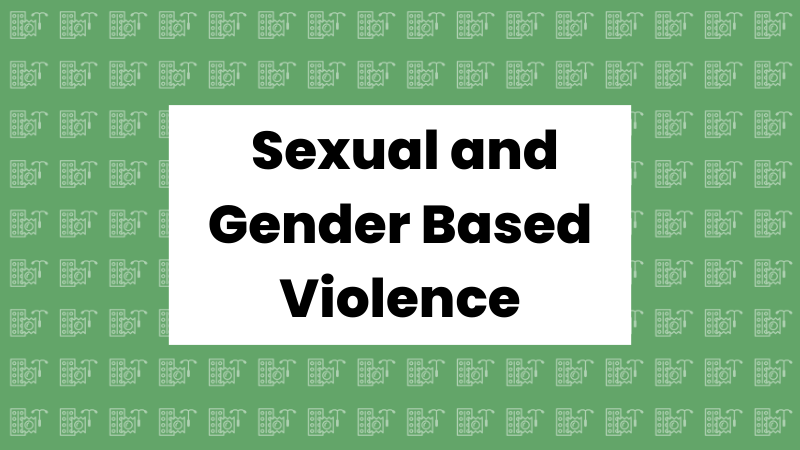
Sexual and gender-based violence (SGBV) is one of the most prevalent human rights violations in the world. It knows no social, economic or national boundaries. Worldwide, an estimated one in three women will experience physical or sexual abuse in her lifetime.
Sexual and gender-based violence (SGBV) includes for example: sexual harassment, violence, genital mutilation and cutting, rape and child marriage. All these examples violate sexual and reproductive rights. It is important to have anti-sgbv work implemented across health care systems.
Gender-based violence undermines people’s health, dignity, security and autonomy, yet it remains shrouded in a culture of silence. Survivors can suffer sexual and reproductive health consequences, including forced and unwanted pregnancies, unsafe abortions, traumatic fistula, sexually transmitted infections including HIV, and even death.
Sexual and gender based-violence is often used as a weapon of war in conflict settings.
What can be done to end SGBV?
- Health care providers should: raise awareness, learn more about the issue, listen with empathy, provide care and treatment, link women to other services (psychological, legal and financial), speak out to stop violence against women.
- Governments and other stakeholders should: challenge social norms that accept gender based violence, provide timely access to health services, ensure training of all health providers, strengthen evidence and data collection.
- Comprehensive Sexuality Education (CSE) prevents SGBV. CSE includes developmentally and culturally relevant, science-based, medically accurate information on a wide range of topics, including human development, gender identity, sexual behaviours, communication skills and empathy. Through CSE it is possible to challenge the gendered and discriminatory social norms that often is a driver of gender-based violence.
- There are increasing evidence on a range of effective programmes -eg. microfinance initiatives for women linked to training that aims to transform gender relationships, community interventions to change social norms, group education for men and boys combined with community outreach, and protective orders and shelters.
- Alcohol reduction programmes and parenting programmes to reduce child abuse have also shown promising results, because they reduce the risk factors for violence.
Read more:
UNFPA State of World Population 2021 – Claiming the right to autonomy and self-determination
UNFPA and Gender-based violence
UN Action Against Sexual Violence in Conflict
UNFPA-UNICEF Joint Programme to Eliminate Female Genital Mutilatioon (FGM)
Sexual Pleasure

Talking openly about sexual pleasure within sexuality education is much contested and is considered a taboo subject. However, talking about everyone’s right to seek pleasurable and enjoyable sexual life and experiences will make sexuality education more relevant especially to adolescents, will strengthen sexual self-determination and autonomy, and will lead to more responsible and safer sexual experiences. That is why talking about sexual pleasure is a crucial part of sexual education.
- Majority of sexual acts are not performed with the goal or procreation, and therefore a need for acknowledging the importance of sexual pleasure throughout life cycle is needed.
- Talking about sexual pleasure helps talking about SRHR in a more realistic and less clinical manner within sexuality education or SRH services.
- There are clear links between the forms of sexual pleasure people seek and their contraceptive practices.
- There is an urgent need to talk about the value of pleasure in itself. This will strengthen sexual self-determination and autonomy as people have more tools to reflect on their own desires and setting their personal boundaries by discovering and deciding what is pleasurable for them.
If sexual pleasure is omitted, one might strengthen rigid gender stereotypes and cultural beliefs that determine “correct” sexual behavior which in fact might leave people without tools to combat sexual violence. If sexuality education programs for young people focus merely on risks and negative outcomes of sexual activity and don’t address pleasure or desire, they might not capture the attention of young people.
Sexually Transmitted Infections (STI), HIV
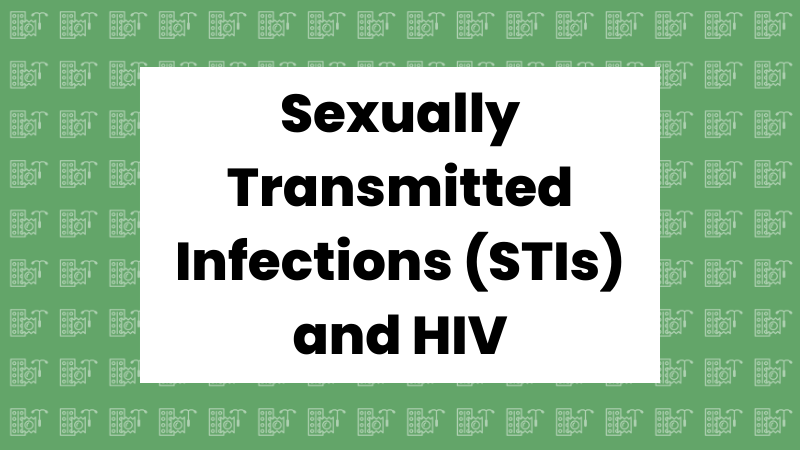
Sexually transmitted infections (STIs) are infections that spread from person to person through sexual activity, including anal, vaginal, or oral sex.
Sexually transmitted infections (STIs), are infections that are primarily transmitted through sexual contact, including vaginal, anal, or oral sex. They are caused by bacteria, viruses, parasites, or other microorganisms, and can affect both men and women of all ages. Most common STIs are Chlamydia, Gonorrhea, Human Papillomavirus (HPV) and Herpes Simplex Virus and HIV.
STIs have negative implications for both individuals and society as a whole due to their impact on health, relationships, and public health. Although STIs can be easily avoided with safe sex behavior, stigma around STIs prevents efficient eradications of STIs. Stigma refers to the social, cultural, and psychological attitudes and beliefs that lead to discrimination, shaming, and ostracization of individuals or groups based on certain characteristics or behaviors. Thus people avoid testing for STIs, especially HIV and as a consequence infect the disease further.
Reducing STI-related stigma is an ongoing process that involves changing societal attitudes and fostering an environment of compassion and understanding. It’s important to work towards creating a world where people can openly discuss their sexual health without fear of judgment or discrimination. Addressing stigma requires efforts at multiple levels. Providing Comprehensive Sexuality Education (CSE) and accurate information about STIs, how they are transmitted, and their prevalence can help lessen misconceptions and fear. It is vital to use inclusive and non-stigmatizing language, when providing CSE in order to promote respectful conversations.
The utmost importance lies in ensuring that sexual health services are accessible to everyone, including youth and vulnerable groups and those who are not in a marriage or in union. Condoms are one of the most effective barriers against STI transmission. Condoms must be available at the affordable price encourages consistent use and reduces the risk of infections. When implementing Family Planning Programs special attention needs to be taken to young people and vulnerable populations as they may have limited financial resources and may engage in risky behaviors due to lack of access. Affordable contraceptives address these disparities.
HIV is the most fatal STI and remains a major public health challenge. Since the first HIV infection was found, 40.4 million people have died on AIDS. In 2022 39.0 million people globally were living with HIV according to UNAIDS. 1.3 million people became newly infected with HIV in 2022 and 630000 people died from AIDS-related illnesses.
Despite the positive development, HIV affects the lives of millions of people, especially the most vulnerable groups. Access to health care – prevention, testing and treatment, is unequally distributed. Attitudes, legislation, inadequate health services, sexual and gender-based violence, lack of education and financial challenges make access to treatment more difficult and undermine people’s sexual rights.
Read more:
2023 UNAIDS Global AIDS Update
Men and Boys
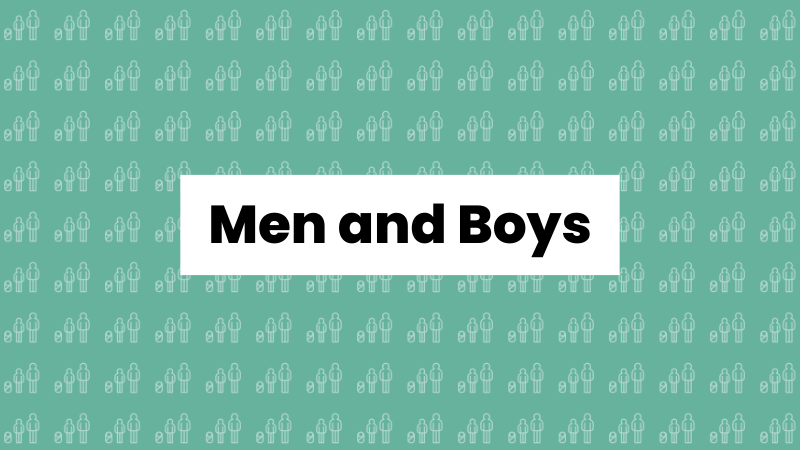
Research has long shown gaps in understanding of men’s sexual and reproductive health and the most effective ways to reach out to them to improve their health and to engage them in supporting their wives’ and partners’ health.
The ICPD Programme of Action noted, “Men play a key role in bringing about gender equality since, in most societies, men exercise preponderant power in nearly every sphere of life, ranging from personal decisions regarding the size of families to the policy and programme decisions taken at all levels of government. It is essential to improve communication between men and women on issues of sexuality and reproductive health, and the understanding of their joint responsibilities, so that men and women are equal partners in public and private life.”
Men are considered supportive if they: (1) agree that a wife or partner is justified in asking her husband or partner to use a condom if he has an STI, (2) disagree that intimate partner violence is justified for any reason, (3) disagree that contraceptive use is women’s business and men do not need to be involved in contraceptive decision-making, and (4) disagree that women who use contraception might become promiscuous. The proportion of men who strongly support their partners’ sexual and reproductive health and empowerment—ie, they responded accordingly to all four statements—ranges from 12% in Lesotho to 77% in Rwanda.
Women continue to shoulder the responsibility of contraceptive use and use of male contraceptive methods has not changed much since the mid-1990s. One barrier is the few male options available, which could be addressed through greater investment in new methods for men.
Acknowledgment and expansion of men’s role in maternal and child health are also key. Given that men are often gatekeepers for women’s access to services, involving men during pregnancy, childbirth, and onward (when women want) can potentially increase gender equality and male support for women’s SRHR.
Programmes that engage men and boys
Promising programmes have been piloted in diverse country settings to promote men’s sexual and reproductive health and increase their support for their partners’ health. A WHO assessment of interventions with men related to sexual and reproductive health, maternal and child health, gender-based violence, fatherhood, and HIV and AIDS found that such interventions elicited important changes in men’s attitudes and behaviours, despite being of short duration.
Some of the more successful programmes work with individuals, groups, and communities to change norms about what it means to be men, to cultivate and reinforce the notion that masculinity can be associated with caregiving, to raise awareness about reproductive health, and to encourage men to seek medical care when needed.
The growing attention to men’s roles as fathers is promising, as evidence suggests that men who are more involved in their children’s lives are more likely to pay attention to reproductive health issues. Brazil’s Prenatal Programme for Fathers and Men’s Health Initiative, developed as part of Brazil’s national health-care policy for men, offers examples of how simple interventions, such as training health professionals (including online training), offering men and fathers opportunities to attend to their own health needs (including HIV testing), and giving women the option to have their partners present at birth, can result in large numbers of men accessing services, and women’s increased sense of safety and support during the antenatal and birth process.
Some might view investing in men’s sexual and reproductive health needs as tantamount to taking from the few funds allocated to meet women’s needs. Some programmes have avoided this binary view and instead adopt a gender-synchronised or gender relational approach that engages men, women, girls, and boys of all sexual orientations and gender identities to challenge the rigid constructions of masculinity and femininity that are harmful to health and well-being.
Under this approach, programmes targeting men are held accountable for their effect on women, women-centred programmes seek ways to constructively engage men, and some programmes engage both (ie, take a couples approach) from their inception. Programmes that engage both work toward mutual understanding and shared goals; they seek to equalise the balance of power between women and men through recognition of how men and women reinforce notions of masculinity and femininity and therefore need to be engaged in reconstructing these roles.
Read more:
Vulnerable Groups
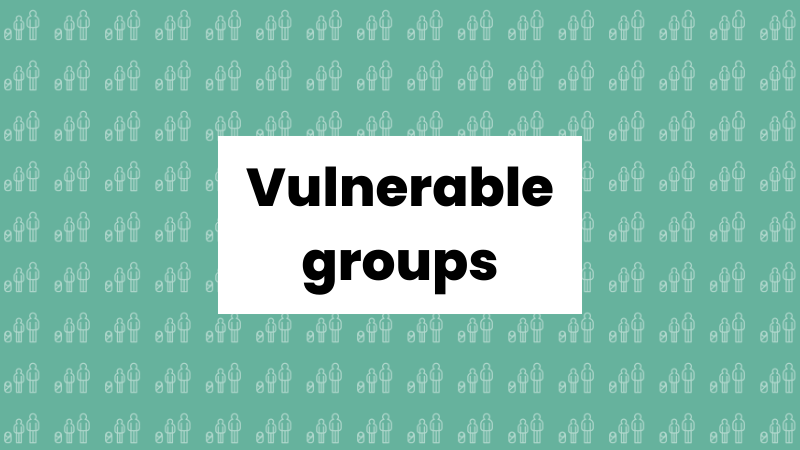
Marginalized groups, indigenous people, LGBTIQA+, refugees and migrants, sex workers and persons with disabilities are especially vulnerable and face discrimination and violence. They have more difficulty accessing essential sexual and reproductive healthcare services, because of social norms, attitudes and values.
LGBTIQA+
The discrimination and violence that LGBTIQA+ people experience often force them to lead a hidden life. Consequently, it is more difficult for them to access sexual and reproductive healthcare services and they cannot freely develop relationships with a partner of their choice.
Read more:
Accelerate progress – sexual and reproductive health and rights for all (The lancet 2018)
Free e-course: OHCHR human rights of LGBTI people tool
Refugees and migrants
Migration may put people in situations that render them vulnerable, which leads to difficulty accessing essential health care. Access to health care may have been reduced due to destruction of infrastructure and facilities or disruptions in distribution channels cutting access to essential medicines and commodities. Refugees and migrants may not be aware of the availability of services in their country of destination and there might be language barriers. They might be left out due to not having the required legal documentation or simply not being able to afford the services. There may be experiences of sexual exploitation, harassment and violence in countries of origin and transit. That is why refugees and migrants are vulnerable to problems related to sexual and reproductive health, sexual violence, exploitation and other human rights violations.
Read more:
Sexual and Reproductive Health in Forced Migration (Frontiers 2022)
Adolescent girls in disaster and conflict (UNFPA 2016)
Persons living with disabilities
It is estimated that 15 percent of world’s population – one billion people – have some kind of disability. Sadly, in many countries disabilities are seen as shameful, the result of a curse, or even as punishment from God. Families often hide family members living with disability from the community or stop them from fully participating in the community’s social activities.
Persons with disabilities have the same sexual and reproductive health needs and rights as any other person, yet they often face barriers to information and services regarding them. People with disabilities are often subjected to discrimination and violence, and to a large extent are deprived of their right to live independently. The sexuality of persons with disabilities is also a taboo in many socities and communities, which leads to lack of access to education and information on SRHR.
Read more:
Promoting sexual and reproductive health for persons with disabilities (WHO/UNFPA 2009)
Opposition to SRHR
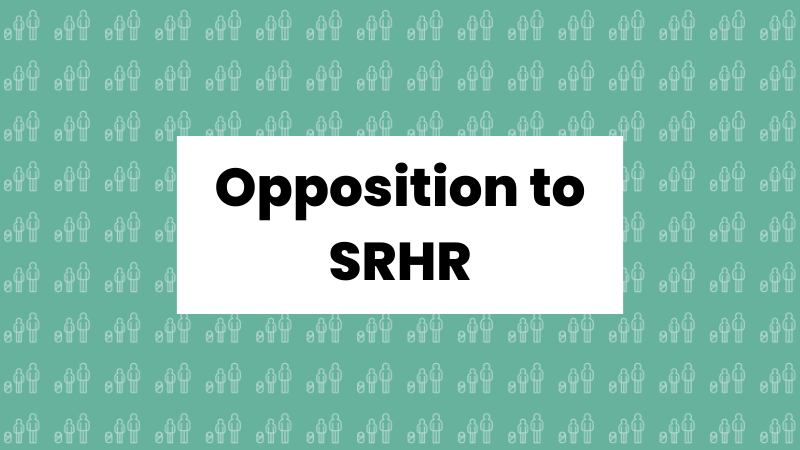
Opposition to SRHR might rise from challenging environments where for instance family planning services might be acceptable but be limited to only married couples excluding everyone else (adolescents, unmarried, sex workers, sexual and gender minorities). There is also well-financed and organised anti-gender movement consisting on ultra-conservatives.
- One most notably force against SRHR is widely recognized so called anti-gender movement. The term “anti-gender movement” is often used to describe a loosely affiliated group of individuals and organizations who oppose certain aspects of gender equality and advocate for traditional gender roles and norms. Supporters of the movement may have various motivations, including religious, cultural, or ideological beliefs. The movement’s opposition to these issues can have harmful consequences for public health, individual rights, and social progress.
- The main subject the movement fight against are: Comprehensive Sexuality Education (CSE), Reproductive Rights such as access to contraception and safe abortion services, LGBTQI+ Rights and Gender Equality.
- The anti-gender movement should be considered when formulating development policies and must be actively countered, as it is well-funded, organized, and wields influence over policy decisions, resulting in the reversal of laws and policies that promote gender equality and sexual and reproductive health and rights (SRHR).
- Conservative/traditional societies, communities and cultures raise several barriers that impede universal access to SRHR. Access to rights-based services, such as contraception and comprehensive sexuality education, is often compromised or denied.
- In challenging environments SRHR taboos include several topics such as sexuality in general, condom use, family planning, addressing sexual and gender based violence.
- It is essential to recognize and address these taboos to be able to advance SRHR and break the barriers for positive changes.
- Certain groups are marginalized and left behind in challenging environments. Especially adolescents are not receiving comprehensive sexuality education which would equip them with skills to enhance their well-being, nor can they access SRH services to realize safe sex practices. Either adolescents are denied services, they are embarrassed to seek them, or they are treated with disrespect and negative attitudes.
- Building enabling environments is a complex task that requires long-term interventions at family, community and policy level.
Read more:
European Parliamentary Forum for Sexual & Reproductive Rights (EPF) resource to anti-gender
Youth
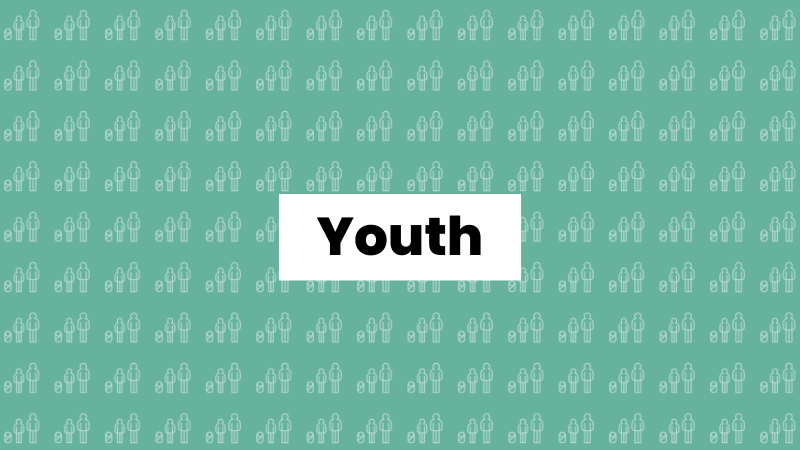
Today the world has more youth population than ever before: there are approximately 1.8 billion young people between the ages of 10 and 24, and the youth population is growing fastest in the poorest nations. This is a vastly diverse group of individuals.
Young People’s Rights to Sexual and Reproductive Health
This new generation is the most educated and healthiest ever. Despite that 258 million children, adolescents and youth are out of school, and far too many young refugees are still being denied access to quality education. Many young people who enter the labor market end up underemployed, in vulnerable jobs or living in poverty despite working hard.
Strategic investments can allow young people to claim their rights —to education, health, development, and to live free from violence and discrimination. The gains delivered by education in childhood and adolescence – a once-in-a-lifetime opportunity – can never be replicated later in life.
Young people living in poverty have limited access to accurate information and opportunities and it makes them vulnerable to poor sexual and reproductive health and limited rights: One in three girls in developing countries is married before the age of 18, threatening her health, education and future prospects. Child marriage, usually results in early pregnancy, is linked to deaths from complications of pregnancy and childbirth, and married girls are more likely than married women to suffer violence and other abuse at the hands of their husbands. Up to half of sexual assaults are committed against girls below the age of 16. Adolescent boys are at risk, as well. Young people – both boys and girls – are disproportionately affected by HIV.
Young people often lack of access to family planning and contraception – to the means to decide freely whether, when or how often to become pregnant. Improved reproductive health and increased access to contraception information and services would offer some of the best hopes for removing the barriers that prevent young people from reaching their full potential and contributing fully to the communities in which they live.
With the right policies and investments, countries can realize a “demographic dividend,” made possible by falling mortality and fertility rates. With a larger working population and fewer dependents, a country has a one-time opportunity for rapid economic growth and stability. To realize this dividend, investments are needed to build institutional capacity, strengthen human capital, pursue economic models that improve employment prospects, and promote inclusive governance and the enjoyment of human rights.
Read more:
Adolescent and young adult health (WHO 2021)
Rights and choices for all adolescents and youth: a UNFPA global strategy 2019
Making health services adolescent friendly (WHO, 2012)
SWOP 2014: The power of 1.8 billion – Adolescents, Youth and the Transformation
Links to sustainable development
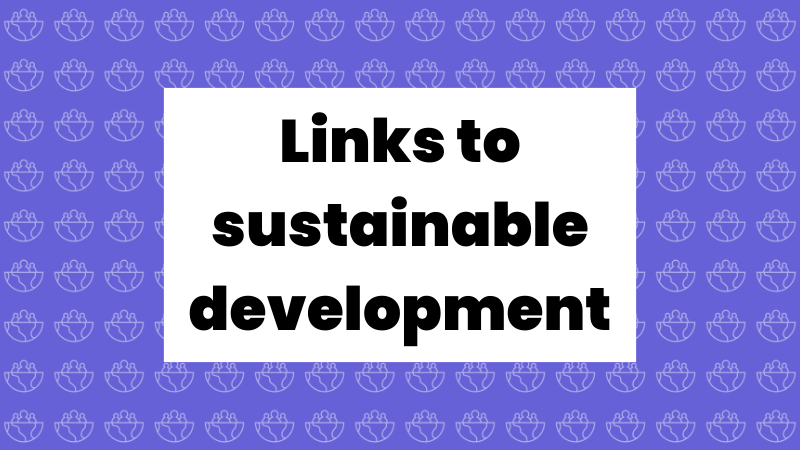
Sexual and reproductive health and rights are a prerequisite for sustainable development. Sustainable development means meeting the needs of the present without compromising the ability of future generations to meet their own needs.
Sustainable development is guided by the 2030 Agenda for Sustainable Development, adopted by the UN in 2015. Agenda 2030 includes 17 sustainable development goals that are integrated which means that action in one area will affect outcomes in others, and that development must balance social, economic and environmental sustainability. Sexual rights are linked to many of the SDGs, most directly to goal 3 on health, goal 4 on education and goal 5 on gender equality. Sexual and Reproductive Health and Reproductive Rights are specifically mentioned in SDGs 3.7 and 5.6.
The realisation of sexual rights increases equality and reduces poverty. Good sexual health and the realisation of sexual rights are a cornerstone of education and social participation, especially for women and girls. Ensuring access to comprehensive sexuality education, health services and contraceptives empowers people to influence the course of their lives – health, education, social participation and reconciling work and family life.
Restricting sexual rights creates inequalities of unacceptable proportions. If people do not have the right to decide on their own identity or their intimate relationships, other human rights cannot be fully realised. Sustainable development cannot be achieved if sexual rights are not realised.
This chapter explores few key sustainable development themes that are connected to the realisation of sexual rights. The last part focuses on the COVID-19 pandemic, which has undermined the progress made on sustainable development and impacted sexual rights in many ways.
Climate Crisis and SRHR
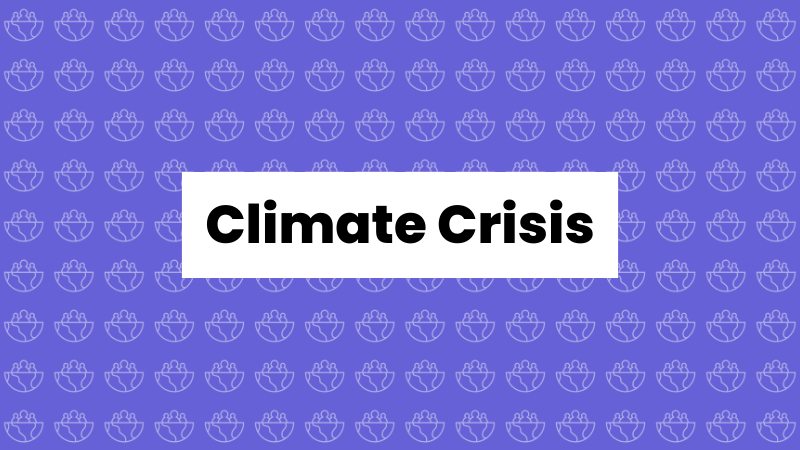
The impacts of the climate crisis on SRHR are many, but SRHR is also central to adaptations and resilience in climate change.
The climate crisis has impacts across all dimensions of sustainable development, including health, gender equality and SRHR. Some impacts of climate crisis to SRHR include reduced or unavailable services in areas affected by disasters, harmful impacts on maternal health due to heat exposure, and increased incidence of sexual and gender-based violence in situations of crises or displacement.
As the impacts of the climate crisis become more severe, adverse outcomes for SRHR will only increase. Improvement of SRHR strengthens people’s resilience to the environmental and climate crises.
Inequalities and marginalization are key factors in heightening vulnerability to the impacts of climate change. Addressing gender inequality and other forms of marginalization is therefore crucial for reducing vulnerability and enhancing resilience. SRHR should be an important consideration in measures aimed at enhancing resilience to both the slow onset impacts of the climate crisis and its more immediate effects.
In Commission of Status of Women in 2022 Member States adopted an intergovernmental agreement, that sets out action Member States must take to advance gender equality within the context of climate change. More under this link.
Human rights based approach to climate crisis
A human rights based approach – and clear integration of gender equality, non-discrimination and sexual and reproductive rights – in climate action is needed. All climate action could clearly indicate how it contributes to respect for and protection and fulfillment of human rights.
Applying a human rights based approach delivers on commitments to human rights while also improving the effectiveness and sustainability of climate action, such as through inclusion of marginalized groups, including women and girls, in problem analyses and decision making regarding viable solutions in local contexts. An integrated approach to SRHR and climate actions would also be benefitial.
Environmental crises must not become a justification for instrumentalizing women’s and girls’ bodies and for population control narratives and measures.
As per capita emission levels in countries with higher fertility levels are currently almost non-existent compared to per capita emission levels in lower fertility wealthy countries, proposing that family planning simply reduces population growth and emission as such, is oversimplification of a complex reality and an unfair distraction from urgently needed solutions to environmental crises.
Learn more
International Planned Parenthood fact pages on climate crises and SRHR and position paper
In COP26 there were a side event titled ‘Advancing Sexual and Reproductive Health and Rights for Climate Change Adaptation and Resilience’. Among the speakers were Mara Dolan with the Women’s Environment and Development Organization (WEDO), Heather McMullen from Queen Mary University in London (who also gave a presentation to CD2030E members during the training on SRHR and the climate crisis last year) and Zainab Yunusa who is a youth campaign coordinator with Plan International.
Video (4 min) on Climate Crises and SRHR from UNFPA
Education
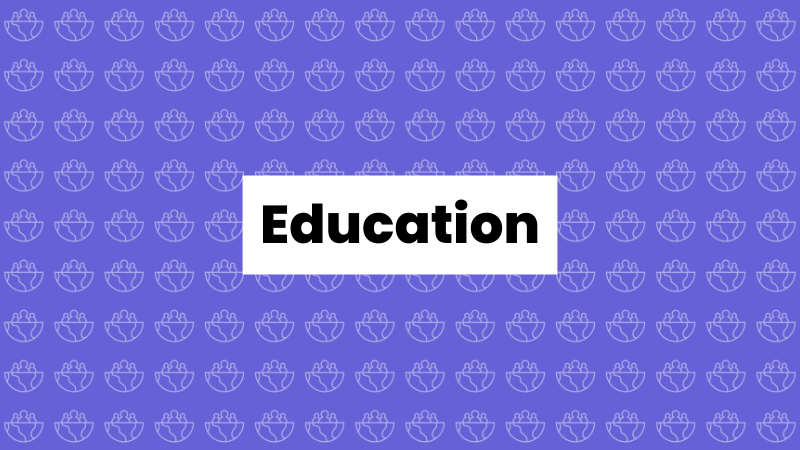
There is a close link between education and SRHR. Education helps young people avoid unwanted pregnancies and reduce child marriage. At the same time, child marriage and/or unwanted pregnancy is a key cause of early school dropout. Ensuring that sexual rights are fulfilled also enables the most vulnerable to complete their education. School enrolment, Comprehensive Sexuality Education CSE and adolescent friendly exual and eproductive health services are essential in diminishing SRHR related barriers for education.
Adolescent pregnancies
A third of school dropouts are caused by a unwanted pregnancies. Poverty and lack of information go a long way to explaining the high incidence of teenage pregnancy, often leading to unprotected, forced and or promiscuous sex. Lack of sexual health services, such as access to contraception, abortion services and adolescent-friendly services, is also a cause of teenage pregnancy.
Students may be expelled from school because of pregnancy due to school rules or otherwise prevented from attending school because of pregnancy. Many countries have laws that guarantee the right to return to school after pregnancy, but legislation in some countries prevents pregnant girls from returning to school. Some do not return because of stigma.
We must ensure that young people have access to:
- Education. It reduces the risk of teenage pregnancy or ending up with a dangerous abortion. Those who go to school are better able to protect themselves.
- Comprehensive sexuality education. It helps young people to protect themselves and make them more likely to initiate sexual activity later, when they are ready. Young people who have received comprehensive sexuality education are more likely to use contraception, so they are more likely to avoid unwanted pregnancy and STIs.
- Sexual health services. Most young people want to avoid unintended pregnancy but need sexual health services to do so. Sexual health services include access to contraception and contraceptive counselling, abortion services and post-abortion care. Youth-friendly services are available, accessible, affordable (free of charge) and of high quality, i.e. designed to meet the needs of young people. Service providers must be pro-youth and never judgmental.
Child marriages
Child marriage is a major barrier to girls’ education and a key reason for dropping out of school.
Reasons for child marriage lies in gender inequality and the belief that girls and women are inferior. It is exacerbated by poverty, lack of education, harmful social norms and practices, and insecurity. Child marriage leads to school dropouts, as a child forced into marriage is expected to drop out of school while ‘preparing’ for marriage. Child marriage is a flagrant violation of sexual rights.
We must ensure that young people have access to:
- Education. We know that the longer girls are in school, the lower the risk of being forced into marriage. Each year of schooling in secondary school reduces the risk of child marriage by 5%.
- Comprehensive sexuality education. Child marriage is caused by inequality, among other things. Comprehensive sexuality education increases equality. Comprehensive sexuality education contributes to the development of responsible and open-minded attitudes and to building just societies. It also helps to break down societal norms and stereotypes about sex.
- Sexual health services. Negative attitudes towards young people’s sexuality lead to a cycle of not providing young people with the sexual health services and advice they need, leading to risky behaviour when information and services are not available.
Menstruation
Menstruation poses a risk of dropping out of school if menstrual health issues are not addressed at school. The school must have facilities where menstrual hygiene and health can be taken care of. Lack of privacy, fear of stigma and increased harassment during menstruation cause many to stay at home during menstruation. Many people cannot afford on menstrual hygiene products or they are unreliable. According to a UNESCO report, one in ten girls in sub-Saharan Africa skips school during their menstrual cycle. Some estimates put this at up to 20% of school days in a school year. Painful menstruation and endometriosis are underdiagnosed everywhere and may be a reason for dropping out of school.
We must ensure that young people have access to:
- Menstrual Hygiene Management MHM. It includes adequate information about menstruation and how to prepare for it. It also includes the appropriate facilities, such as private sanitation, menstrual pads and washing facilities, to manage menstruation.
- Comprehensive sexuality education. CSE should include content on menstruation. Menstrual issues should cover heavy menstrual bleeding, menstrual pain, endometriosis, and other specific topics related to menstruation so that those who are suffering from menstruation can receive treatment. Education can help to dispel the stigma and shame associated with menstruation. Menstruation should be taught to all genders.
- Sexual health services. Services include at least the provision of menstrual hygiene products and treatment for painful and heavy periods.
Read more:
How investing in sexual and reproductive health and rights helps keep girls in school (The UK All-Party Parliamentary Group on Population, Development and Reproductive Health report 2021)
UNFPA on Menstrual Health(2022)
UNFPA on Adolescent Pregnanancy (2022)
UNFPA on Child Marriage (2022)
Humanitarian Settings
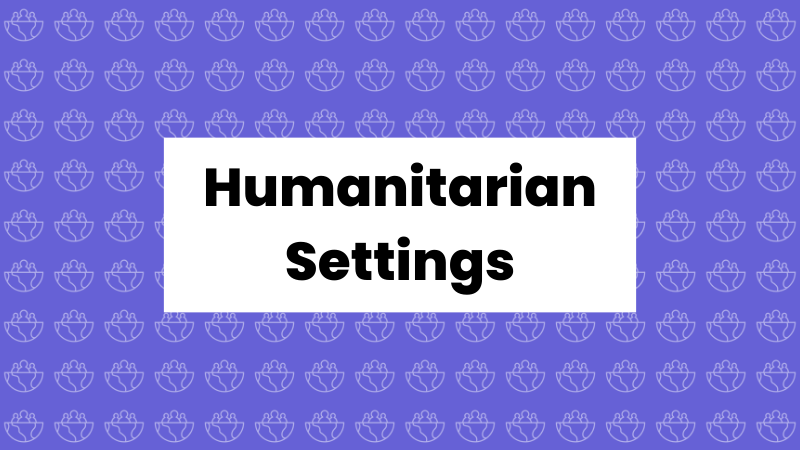
More than 26 million women and girls of reproductive age worldwide have been forced away from their homes. Impacted by conflict, violence and natural disasters, women and girls in emergencies are at heightened risk of gender-based violence and trafficking, unintended pregnancy, maternal morbidity and mortality, unsafe abortions, and child, early and forced marriage.
Currently 16 % of the world’s population lives in a country affected by humanitarian crises.
- Over half of preventable maternal and under-five deaths take place in settings of conflict, displacement and natural disasters
- 2/3 of preventable maternal deaths and 45 % of new-born deaths take place in countries affected by recent conflict, natural disaster, or both, where the risk of giving birth is compounded by the heightened incidence of sexual assault, exploitation and harmful practices.
Women and girls’ unique needs and priorities are not treated with the same urgency as shelter, water and food aid in emergency response and recovery efforts. Hence opportunities to transform unequal gender relations and shift harmful gender norms are being missed.
A more systematic approach for ensuring that humanitarian action responds to women’s and girls’ rights and needs is within reach. Drawing on emerging initiatives, best practices, research and the perspectives of affected communities themselves, the following recommendations provide a blueprint for governments, donors, United Nations agencies, civil society organizations, and national and local actors to work in tandem to drive system-level changes and put women’s and girls’ rights and agency at the centre of every humanitarian response:
- Women’s and girls’ voice and leadership
- Equitable access to sexual and reproductive health services
- Prevention and response to gender-based violence
- Preventing sexual harassment, exploitation and abuse
- Supporting women’s economic empowerment
Read more:
Impact of COVID-19 on SRHR
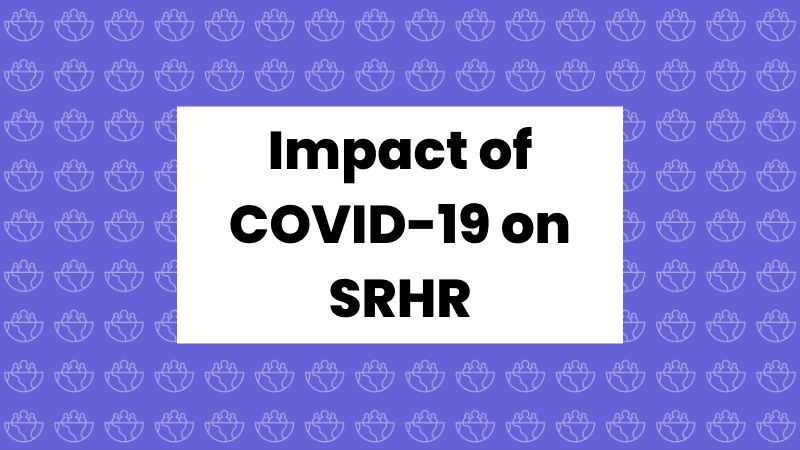
COVID-19 pandemic significantly impacted sexual and reproductive health and rights, especially in low- and middle-income countries. This is due to the de-prioritization and disruption in the provision of SRHR services as well as mobility restrictions and changes in health-seeking behaviors. This has impacted directly and indirectly the lives and health on millions of people, since SRHR services are essential, time-sensitive and often lifesaving.
The pandemic has worsened existing inequalities, for women and girls, young people and discrimination of other marginalized groups such as persons with disabilities, LGBTIQ+, elder people and those in extreme poverty. Governments and international community must make sure that sexual and reproductive health and rights are and will be emphasized during and after the pandemic. Without protecting everyone’s sexual and reproductive health and rights we cannot achieve SDGs by 2030.
Harmful Practices
Harmful practices such as child marriage, female genital mutilation (FGM) and gender-based violence have increased since the COVID-19 outbreak. This is e.g., due to a grown economic insecurity, lockdowns and school closures. For example, according to UNICEF 10 million additional girls are at risk of child marriage due to COVID-19. In addition, two million girl who would otherwise been safe from the FGM are believed to be at risk over the next decade as a direct result of the pandemic.
Even before COVID-19 one in three women experienced physical or sexual violence during their lifetime. However, the pandemic has intensified violence against women and girls. According to UNFPA COVID-19 pandemic is likely to cause a one-third reduction in progress towards ending gender-based violence by 2030. In addition, life-saving care and support to gender based violence survivors (i.e., clinical management of rape and mental health and psycho-social support) may be cut off in the health care response when health service providers are overburdened and preoccupied with handling COVID-19 cases.
The Impact of COVID-19 on Family Planning
Access to family planning is a human right. It saves lives and promotes healthier populations, more efficient health systems and stronger economies. However, since the beginning of the pandemic, lifesaving family planning services have been closed due to a lack of resources as sexual and reproductive services are not seen as important as other health care services. Clinical staff occupied with the COVID-19 response may not have time to provide services or may lack personal protective equipment to provide services safely. In addition, due to a movement restrictions and/or fear of exposure on COVID-19 women have limited visits to health facilities.
Supply chain disruptions have limited the availability of contraceptives in many places. This has weakened women’s decision-making over their own body as they are unable to use modern contraceptives and led to a rising number of unintended pregnancies. The disruptions caused an estimated 2.7 million unexpected pregnancies in the pandemic’s first year.
COVID-19 pandemic has also impacted on abortion services. Lockdowns and lack of health care resources has hindering access to abortion services. In addition, some countries are using pandemic as an excuse to tighten abortion laws. This caused an estimated 1.2 million unsafe abortions only in the first 6 months of the pandemic.
Youth
There are a range of social impacts that have detrimental effects on adolescents’ sexual and reproductive health and rights. First, due to school closures millions of young people are lacking comprehensive sexuality education. Second, lockdowns have distrupted contraceptive supply chains and the ability to travel to health facilities, putting young people at greater risk of unintended pregnancy by reducing their access to information and contraceptive services. Third, the economic crisis has driven increases in gender-based violence, child marriage and other human rights violations that threaten young people’s health and well-being.
The anti-gender movement
In addition, the COVID-19 pandemic has given a new platform to the opponents of SRHR to use the COVID-19 pandemic as cover to promote their own agenda that is much wider than only to oppose SRHR. It can be seen as an alternative political and social system which is against human rights, multilateralism and civil society. According to IPPF survey opponents of SRHR are using different kind of tactics e.g. spreading misinformation, framing the pandemic as an opportunity to reinforce traditional values, increasing discrimination against vulnerable populations, pushing for regressive measures against SRHR and blocking progressive debates on SRHR laws and policies.
Read more:
Opponents of sexual and reproductive health and rights step up pressure during COVID-19 (IPPF, 2020)
Why coronavirus has placed million more girls on risk of FGM (Guardian, 2020)
COVID19 and Sexual and Reproductive Health and Rights (UNFPA)
10 million additional girls at risk of child marriage due to COVID-19 (UNICEF, 2021)
Universal Health Coverage
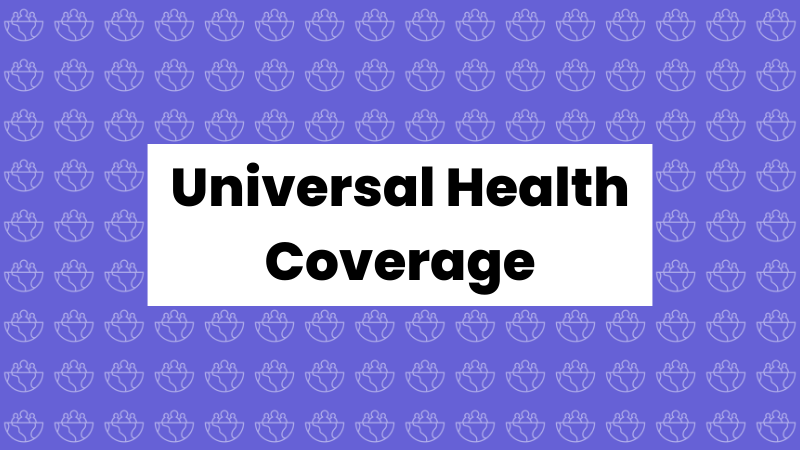
Universal Health Coverage (UHC) means people having access to quality and affordable health care. Sexual and reproductive health and rights (SRHR) are an essential part of UHC. All UN member States have agreed to achieve Universal Health Coverage by 2030, as part of the Sustainable Development Goals.
According to World Health Organisation Universal health coverage (UHC) means that all people have access to the full range of quality health services they need, when and where they need them, without financial hardship. It covers the full continuum of essential health services, from health promotion to prevention, treatment, rehabilitation, and palliative care across the life course.
- 30 % of the world’s population still cannot access essential health services
- The COVID-19 pandemic further disrupted essential services in 92% of countries
- Almost 1 billion people spend at least 10 percent of their household budget to pay for health.
Without taking into account a population’s SRHR needs, UHC is impossible to achieve, as many of the basic health needs are linked to people’s sexual and reproductive health. Good sexual and reproductive health means that all individuals have a right to make decisions governing their body and to access services that support that right.
Agenda 2030 explicitly recognizes sexual and reproductive health as essential to health, development and women’s empowerment. In 2019 UN member states agreed that sexual and reproductive health is a component of UHC in the first ever High-level meeting (HLM) on Universal Health Coverage (UHC).
However, comprehensive Sexual and Reproductive Health (SRH) services are not included in health benefit package in many countries, especially in low- and middle-income countries.This leads to inequality in access to Sexual and Reproductive Health services and affects especially vulnerable groups; women and girls’, adolescent, LGBTIQ+ and people with disabilities.
Governments must ensure that everyone has equal access to quality health services across the life course. This needs to include comprehensive Sexual and Reproductive Health services such as (WHO):
- Contraception counselling and provision
- Fertility care
- Antenatal, intrapartum and postnatal care
- Safe abortion care
- Sexual function and psychosexual counselling
- Comprehensive education and information
- Gender-based violence prevention, support and care
- Prevention and control of HIV and other sexually transmissible infections (includes reproductive cancers)
Three cross-cutting principles: equity in access, quality of care and accountability, are key to acquiring a comprehensive approach to SRHR and to advancing both the SRHR aspects of Agenda 2030 and UHC reforms. These principles impact both the delivery of sexual and reproductive health services and the realization of individuals’ sexual and reproductive rights.
- Equity in access – Individuals in need of services can access them irrespective of their ability to pay, socioeconomic status, geographic location, ethnicity, education or gender and are empowered to use these services
- Quality of care – Commodities and facilities are of good quality and services are delivered in a safe, effective, timely, efficient, integrated, equitable and people-centred manner, based on care standards and treatment guidelines and taking into account people’s experiences and perceptions of care, including affordability and acceptability
- Accountability – SRHR is underpinned by human rights and political, financial and performance accountability, with inclusiveness and transparency at all levels of the health system, and ensuring that rights holders’ views and demands are captured and taken into account in planning and implementation
Read more:
Sexual and Reproductive Health And Rights: An Essential Element of Universal Health Coverage (2019)
UNFPA has defined and described the key components of a comprehensive life course approach to sexual and reproductive health and rights. Furthermore, this document describes how countries can move towards universal access to sexual and reproductive health and rights as an essential part of universal health coverage and to provide inspiring examples from countries that have moved in this direction.
Agreements and policies: Finland
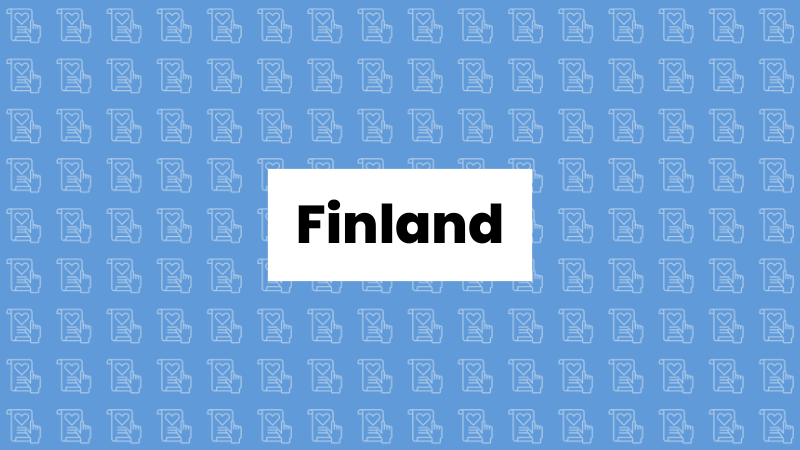
Finland is committed to advancing SRHR in it’s report on development policy as well as the humanitarian policy and national action plan on Women, peace and security, UN resolution 1325.
The aim of Finland’s development policy is to support developing countries’ efforts to eradicate poverty and inequality and promote sustainable development. Finnish development policy is human rights based and gender equality is a cross-cutting objective.
The rights and status of women and girls is one of the four priority areas in the current Finnish-development policy. SRHR is emphasized under this priority. Ministry of Foreign Affairs of Finland’s Report on Development Policy Across Parliamentary Terms states that “Finland supports the safeguarding of sexual and reproductive health and rights (SRHR) of women and girls, including those with disabilities, and their right to access high-quality and non-discriminatory sexual and reproductive health services. Finland seeks to strongly reduce maternal and child mortality and promotes comprehensive sexual education as well as the inclusion of men and boys in the realisation of these rights. Finnish expertise relating to maternal and child health as well as contraception clinics is also taken into account. At the same time, all these measures are linked with the broader health policies pursued by developing countries.”
Finland promotes sexual and reproductive health and rights (SRHR) comprehensively and therefore uses the full term, which includes sexual health services, sexuality education, contraception, maternity health services, consent, and the right to safe abortion, among others.
Finland supports SRHR in most of the bilateral partner countries
Priority areas are listed in country programmes, which show that Finland supports comprehensive sexuality education in Mosambique and Ukraine, sexual rights of people with disabilities in Syria and Central Asia plus also SRHR in general in Kenya, Somalia and Afghanistan.
Finland’s multilateral development cooperation
Finland gives priority to UN agencies that promote SRHR, gender equality and work to reduce inequality. Finland is one of the largest supporter of the UNFPA, United Nations Sexual and Reproductive Health Agency.
Humanitarian aid
Finland is committed to channeling annually about 10 per cent of its development aid appropriations for humanitarian aid directed to official development assistance (ODA) recipient countries. Humanitarian aid is guided by Finland’s Humanitarian Policy. According to the humanitarian policy Finland pays particular attention to improving the status of people with disabilities in emergencies, to the sexual and reproductive health and rights of women and girls, and to the need to prevent sexual violence in crisis situations.
National Action Plan on Women, Peace and Security
Finland’s new National Action Plan (NAP) on Women, Peace and Security is Finland’s fourth NAP, extending from 2023 to the end of 2027. The NAP is the result of a broad-based stakeholder collaboration. Its key objective is to strengthen women’s participation in peace and security, and thereby support efforts to build sustainable peace. One of the main objectives of Finland’s fourth NAP is Women’s meaningful participation and diversity have a stronger role in conflict prevention and in building sustainable peace which includes strengthening SRHR in fragile contexts and conflict areas. Also the objective Women and girls have more security, their rights are better safeguarded and their diverse needs are better met during crises includes emphasizing SRHR
Read more:
Report on Development Policy Across Parliamentary Terms (Finnish MFA, 2021)
Finland’s Humanitarian Policy (2019) (in Finnish, PDF, 2 327 KB)
UNFPA – Donor Profile, Finland
Finland’s National Action Plan on Women, Peace and Security
Agreements and policies: EU level
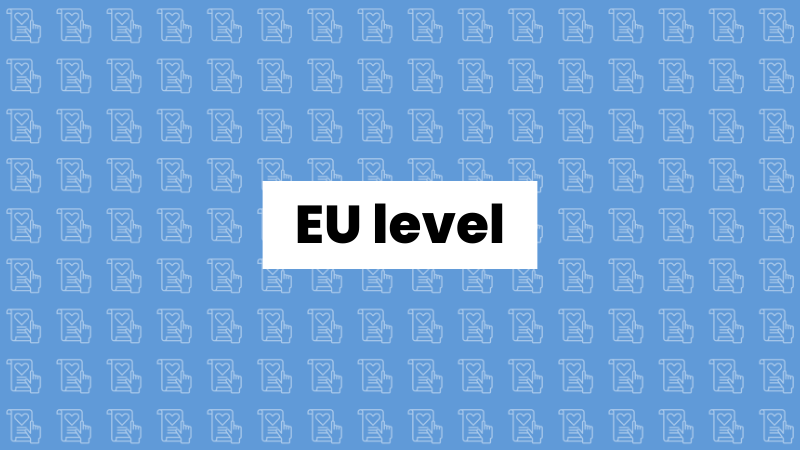
European Union, together with its member states, is the world’s leading donor of development cooperation as well as one of the strongest supporters of SRHR, and family planning (FP) in particular. EU is committed to SRHR in European Consensus on Development, the joint vision for development policy for the EU and its Member states.
EU’s support to SRHR globally
The European Union contributes to advancing access to and respect for SRHR through allocating it’s development cooperation funds to SRHR sector. Most of EU’s funding is channeled through geographic programmes, which means that SRHR needs to be prioritised in the programming phase when Multiannual Indicative Programmes (MIPs) are created for EU’s cooperation with partner countries and regions. There is also a small envelope for thematic programmes, where support to health is one of the priorities. Currently for example 21 out of 45 MIPs in Sub-Saharan Africa refer to SRH through different approaches. More info on SRHR in EU’s cooperation with partner countries.
There is also a Team Europe Initiative on SRHR in sub-Saharan Africa. Through this TEI the EU and ten of it’s member states, including Finland, will aim to 1) increase the implementation of continental and regional SRHR commitments, including in the health and education sectors, 2) strengthen regional mechanisms to address supply-side
constraints to improve the availability, affordability, and acceptability of SRH commodities and 3) promote accountability and evidence-based policymaking and implementation. More info on the SRHR in Sub-Saharan Africa TEI.
Countdown 2030 Consortium publishes a yearly spotlight report on European donor support to SRHR. Read the latest report here.
The European Consensus on Development
The European Consensus on Development (2017) is a shared vision and framework for action for development cooperation for the European Union (EU) and its Member States. The consensus reaffirms poverty eradication as EU’s main development policy objective. The Consensus contributes to the objectives and principles of EU external action as laid down in the Lisbon Treaty, and supports the Global Strategy on the EU’s Foreign and Security Policy presented in June 2016 by the High Representative.
SRHR are mentioned especially in the paragraph 34, “The EU remains committed to the promotion, protection and fulfilment of all human rights and to the full and effective implementation of the Beijing Platform for Action and the Programme of Action of the International Conference on Population and Development (ICPD) and the outcomes of their review conferences and remains committed to sexual and reproductive health and rights (SRHR), in this context. Having that in mind, the EU reaffirms its commitment to the promotion, protection and fulfilment of the right of every individual to have full control over, and decide freely and responsibly on matters related to their sexuality and sexual and reproductive health, free from discrimination, coercion and violence. The EU further stresses the need for universal access to quality and affordable comprehensive sexual and reproductive health information, education, including comprehensive sexuality education, and health-care services.”
Read more:
The European Consensus on Development
Global Strategy on the EU’s Foreign and Security Policy (2016)
Gender Action Plan
EU’s Action Plan on Gender Equality and Women’s Empowerment in External Action 2021–2025 (also known as GAP III) guides EU’s and its member States’ external relations and development policy related to Gender issues.
GAP III aims to accelerate progress on empowering women and girls, and safeguard gains made on gender equality during the 25 years since the adoption of the Beijing Declaration and its Platform for Action. SRHR is mentioned as one of the key thematic areas of EU’s engagement. GAP III promotes a transformative and intersectional approach, aiming to address structural causes of gender inequality and gender-based discrimination
EU delegations implement the Gender Action Plan by developing Country Level Implementation Plans (CLIPs). SRHR has been identified as a priority sector by several countries, in particular in sub-Saharan Africa.
Read more:
SRHR in Europe
All EU member states are bound by human rights treaties such as the European Convention, the Convention on the Rights of the Child and the Convention on the Elimination of All Forms of Discrimination Against Women. All EU member states are also united around the programmes of action from Cairo and Beijing. All these agreements guarantee sexual and reproductive rights to some extent.
Under international and European human rights law European states have the duty to take effective steps to respect and protect women’s sexual and reproductive health and rights (SRHR). This means respecting a range of civil, political, economic, social and cultural rights, including right to health, to life, to be free from torture and illtreatment, to privacy, equality and non-discrimination. States should provide all women with accessible, affordable, good quality sexual and reproductive health care and services on national level and promote these rights on international cooperation.
Read more:
Council of Europe – Women’s Sexual and Reproductive Health and Rights In Europe
Countdown 2030 Europe
Countdown 2030 Europe is a Consortium of 15 leading European non-governmental organizations working to ensure advancement of SRHR, human rights and investment in family planning. Family Federation of Finland (Väestöliitto) is one of the 15 member non-governmental organisation of Countdown 2030 Europe. Aim of the Consortium is to hold both EU institutions and member states accountable for their policy and funding commitments to sexual and reproductive health and rights.
Read more: Countdown 2030 Europe
Agreements and policies: UN level
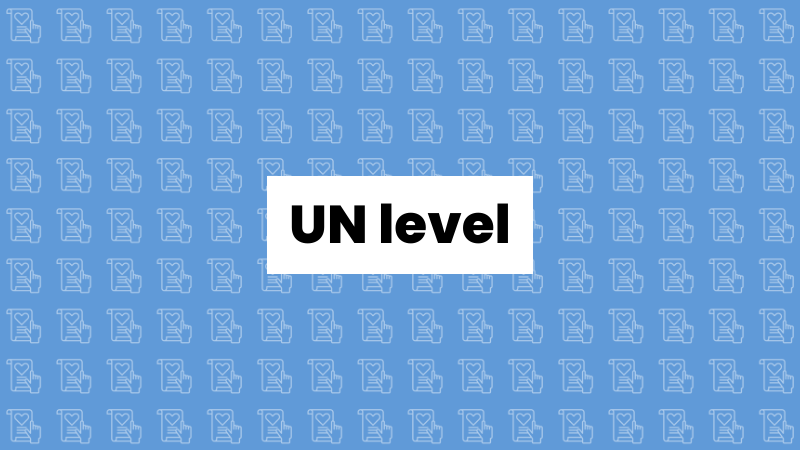
Almost all UN bodies have paid attention to SRHR. UNFPA is the leading UN organisation working with SRHR. Other organisations that have SRHR as a priority are UNAIDS, UN Women, WHO and the World Bank. Also UNESCO works with SRHR issues related to comprehensive sexuality education.
International agreements and declarations:
1994 The International Conference on Population and Development (ICPD) in Cairo and its Programme of Action (PoA)
ICPD was organised in Cairo, where 179 governments adopted a landmark Programme of Action which marks a very significant shift in thinking and policy development from a population perspective to a rights-based approach to reproductive health. The PoA defines and recognises comprehensive definitions of reproductive health, sexual health and advances the idea of reproductive rights.
In the ICPD PoA, views on human rights, population, sexual and reproductive health, gender equality and sustainable development merged into a remarkable global consensus that placed individual dignity and human rights, including the right to plan one’s family, at the very heart of development.
International Conference on Population and Development
1995 The Fourth World Conference on Women in Beijing and its Platform for Action
Confirmed and expanded the commitment to a rights-based approach to SRH made at ICPD the previous year. The Conference also stated that women’s power and ability to decide over their own sexuality and reproduction is an important step to ensure that they can fully exercise and enjoy their human rights.
The Fourth World Conference on Women in Beijing and its Platform for Action
2015 Sustainable Development Goals -Agenda 2030
SDGs provide an international framework for sustainable development and poverty reduction. The goals must be achieved by 2030. The agenda 2030 includes 17 Sustainable Development Goals and 169 specific sub-goals or targets. Several global goals are related to SRHR, and the most direct ones are Goal 3 on health, Goal 4 on education and Goal 5 on gender equality.
There are two specific SDG targets focusing on SRHR, as follows:
3.7: by 2030, ensure universal access to sexual and reproductive health-care services, including for family planning, information and education, and the integration of reproductive health into national strategies and programmes; and target
5.6: ensure universal access to sexual and reproductive health and reproductive rights as agreed in accordance with the Programme of Action of the ICPD and the Beijing Platform for Action and the outcome documents of their review conferences.
The SDGs refer to important international action programmes which are still in effect, such as the PoA of the ICPD.
Agenda 2030 for Sustainable Development Goals
Fact sheets on sustainable development goals: SRHR targets
The Commission on Population and Development (CPD)
The CPD was established in 1946 as the Population Commission but was renamed by the General Assembly in 1994 and given the responsibility for assessing progress on implementing the ICPD Programme of Action at the national, regional and international levels.
The Commission is composed of 47 Member States elected by the Economic and Social Council for a period of four years on the basis of geographic distribution. It meets once a year, typically in April.
UN Population Division: Commission on Population and Development
2019 ICPD25 Nairobi Summit
2019 marked the 25th anniversary of the International Conference on Population and Development (ICPD). The governments of Kenya and Denmark and UNFPA co-convened the Nairobi Summit on ICPD25, a high-level conference to mobilize the political will and financial commitments needed to fully implement the ICPD Programme of Action.
Comprehensive Approach to Sexuality
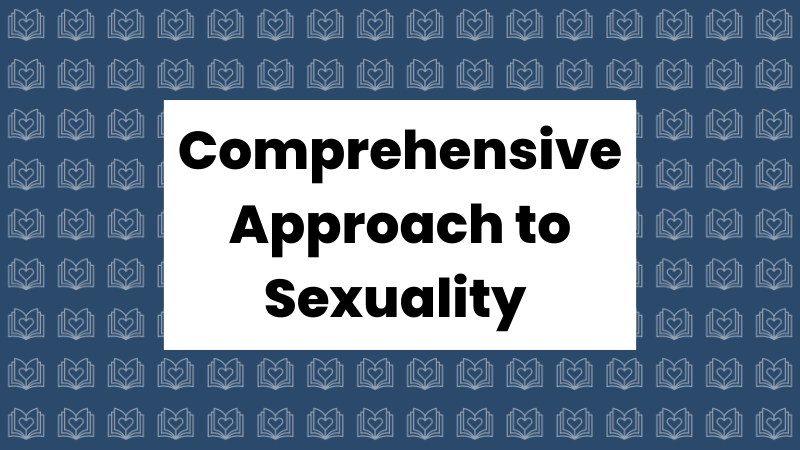
A comprehensive approach to sexuality means that sexuality is understood in a broad and multidimensional way as part of an individual’s life, and it also has a societal impact. This includes the physical, psychological, social, and spiritual dimensions.
Sexuality involves biology as well as emotions and feelings. It also encompasses sexual development and identity, desires, intimacy and intimacy needs, and sexual health and rights. It is individual, multifaceted, and evolves throughout life. Sexuality can be expressed in many different ways, such as through thoughts, beliefs, values, and relationships. It involves pleasure and the search for one’s own sexual identity.
This approach promotes healthy and positive relationships with oneself and others, helps prevent sexual violence and discrimination, and supports the right of individuals to express their sexuality safely and respectfully. Sexuality and its norms have a strong impact on various aspects of life, such as an individual’s ability to educate and work, to reproduce or not, to have close relationships, and to have power over their own body.
Despite international commitments, sexual rights are violated worldwide and are at constant risk of being violated. Sexual rights are often the most vulnerable of human rights. For example, abortion laws have been tightened in recent years, and comprehensive sexuality education is being opposed or weakened. Access to contraception is also poor, particularly affecting young people worldwide. Sexual rights are restricted by governments, lobby groups, health professionals, communities, and families.
Restrictions on sexual rights create unacceptable inequalities. Young people are often taught to think and behave in ways that reinforce gender norms that perpetuate inequality. Discrimination related to sexual orientation and gender diversity is a clear example of this.
Gender-transformative approach
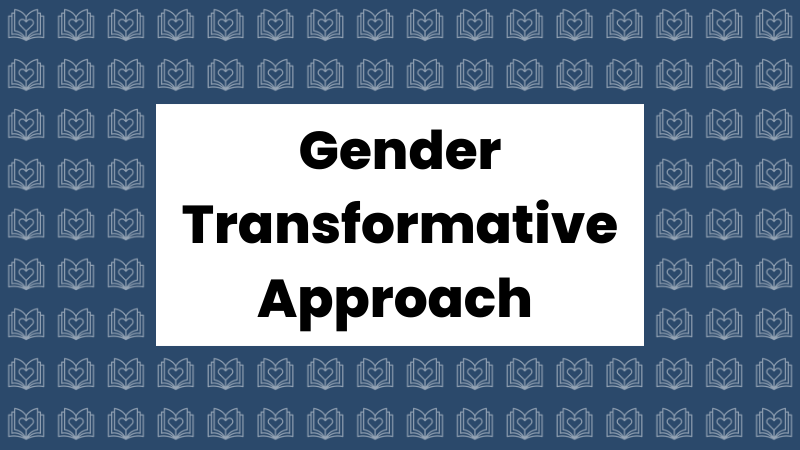
Gender transformative approaches seek to challenge gender inequality by transforming harmful gender norms, roles and relations, while working towards redistributing power, resources, and services more equally.
Both gender-transformative approach and sexual and reproductive health and rights contribute to promoting a holistic understanding of well-being, autonomy, and equality for individuals in the realm of sexuality.
A gender-transformative approach refers to a comprehensive and intentional approach that aims to challenge and change the deep-rooted norms, attitudes, and power dynamics that create gender inequalities. Instead of merely addressing surface-level gender disparities, a gender-transformative approach seeks to create substantial and lasting changes in the ways that societies perceive, treat, and interact with gender.
This approach recognizes that gender inequality is connected to social, economic, and political structures. It acknowledges that the roles and expectations assigned to individuals based on their gender impact all aspects of their lives, and that these roles are often unequal and restrictive. This may cause barriers in achieving services, education and possibilities in participating in decision-making.
A gender-transformative approach involves questioning and challenging traditional gender norms and roles. It seeks to challenge and reshape traditional gender norms that dictate expectations and behaviors related to sexuality. This includes addressing harmful stereotypes, discrimination, and societal pressures that affect how individuals express their sexual identities and desires. By challenging stigma and shame gender-transformative approach recognizes the harm caused by repressive gender norms and stereotypes can negatively impact individuals’ sexual health and rights by preventing open communication, seeking information, and accessing healthcare.
A central aspect of gender-transformative approach is the promotion of bodily autonomy. This involves acknowledging and respecting individuals’ choices regarding their sexual partners, practices, and reproductive decisions.
With gender-transformative approach it is possible to challenge power dynamics that are enabler to sexual and gender based violence.
Read more
UNFPA Gender transformative approaches to achieve gender equality and sexual and reproductive health and rights
Rutgers’ gender-transformative approach
Historical approaches to SRHR

When advancing SRHR it is important to understand the history of family planning and sexual and reproductive health policies, as one might still face prejudice and rhetoric based on these historical roots.
SRHR programmes and policies worldwide find their origins in Europe’s and US’ elites’ homegrown concerns about population control in 19th and 20th Century. There was a lot of fear for ‘exponential population growth’ which could lead to ‘overpopulation’, where ‘scarce resources’ would not be enough for the population. People’s poverty was also explained by their lack of (sexual) self-restraint and large families instead of being the outcome of economical exploitative relations between the haves and have nots. There were ideas that poverty could be tackled by keeping poor populations ‘manageable’ and reducing their size, instead of rethinking economical relations and redistribution.
Family planning and especially birth control was brought up as the solution to the situation. Both Margaret Sanger (founder of IPPF) and Marie Stopes (founder of MSI) were influenced by Malthusian ideas about overpopulation. After the Second World War the export of population control to so-called Third World started by USAID, big INGOs & foundations and UN. The Cold War influenced the situation as well as there was a fear that growing impoverished populations could support regime change towards communism and that Western economies could be affected if resources would get depleted by Southern countries’ ‘unrestricted population growth’.
Over time the discourse has changed from ‘population control’ to ‘reproductive health and rights’ making coercive population politics less visible. Most NGOs and actors advancing SRHR do have a human rights-based approach and are aiming towards a world where people are free to make their own decisions regarding number of children. But the historical discourse has not disappeared. Donor countries can be investing in family planning and SRHR with the aim of curbing migration or ‘root causes’ of climate change. Decrease in fertility can still be seen as an ideal outcome of SRHR policies. The climate crisis or migration must not become new justifications for instrumentalizing women’s and girls’ bodies and for population control narratives and measures.
Read more:
UNFPA State of World Population 2019: Unfinished Business: The Pursuit Of Rights And Choices For All
Human Rights Based Approach
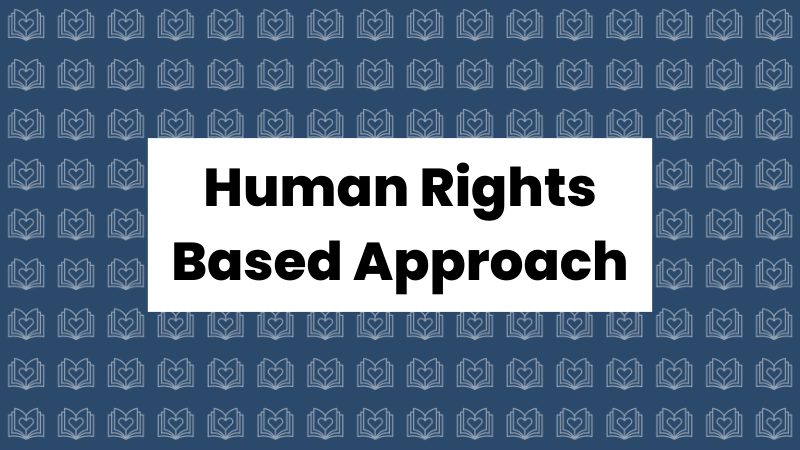
The UN Statement of Common Understanding on Human Rights-Based Approaches to Development Cooperation and Programming (the Common Understanding) was adopted by the United Nations Development Group (UNDG) in 2003. The purpose behind developing a common understanding was to ensure that UN agencies, funds and programmes apply a consistent Human Rights-Based Approach to common programming processes at global and regional levels, and especially at the country level in relation to the CCA and UNDAF.
Access to sexual and reproductive health and rights (SRHR) not only saves lives but is also a basic human right set out in the Programme of Action of the International Conference on Population and Development (ICPD) and reiterated in Beijing Declaration and Programme of Action from Fourth World Conference on Women in Beijing 1995, their follow-up and review processes and United Nations resolutions and instruments.
In humanitarian contexts, the rights of women, adolescents and girls affected by conflict are protected by multiple, complementary bodies of international law, including international humanitarian law (IHL), international human rights law (IHRL), international criminal law, and refugee law. (IPPF)
UNFPA and human rights based approach
ICPD and human rights based approach
The main issues discussed in the publication are:
- Maternal mortality and morbidity
- Contraceptive information and services
- Abortion
- Sexual and reproductive health education and information
- Adolescents and youth
- Individuals belonging to marginalized and under-served populations
- HIV/Aids
- Violence against women
- Harmful traditional practices
- Advancing sexual and reproductive health and reproductive rights after ICPD 2014.
The Rights to Contraceptive Information and Services for Women and Adolescents
Women’s and adolescents’ right to contraceptive information and services is grounded in basic human rights.
A Human Rights-Based Approach to Programming, Practical Information and Training Materials (from 2010)
This Manual provides step-by-step guidance on how to apply a culturally sensitive, gender-responsive, human rights-based approach to programming in each of UNFPA’s three core areas of work: population and development, reproductive health, and gender.
How does quality of care relate to a rights-based approach to family planning programs?
This paper compares definitions of quality of family planning and contrasts them with the essentials of a rights-based approach. It aims to create common understanding on what these terms mean, where they overlap and how they differ.
Intersectionality
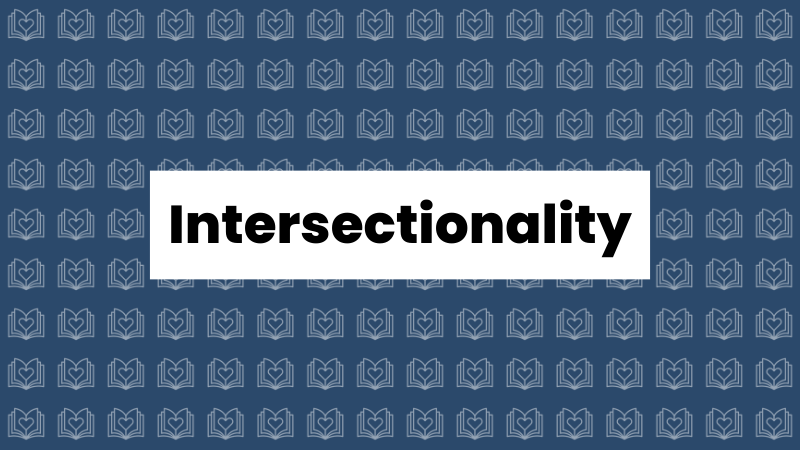
Intersectionality means taking into account a broad range of differences that affect people’s position in society.
Intersectionality recognizes that individuals may experience multiple forms of oppression and discrimination simultaneously, and in relation to each other, based on their social identities such as race, gender, sexual orientation, class, origin, and ability. These identities intersect and interact with each other in complex ways, leading to unique experiences and challenges for individuals who hold multiple marginalized identities. These combine to create intersecting forms of privilege and oppression depending on a person’s context and existing power structures such as patriarchy, ableism, colonialism, imperialism, homophobia, and racism.
Intersectionality highlights the need to consider the ways in which different forms of discrimination and privilege intersect and affect individuals’ experiences, and to create more inclusive and equitable systems and structures that take into account these complexities. Intersectional approach is necessary to promote a society of equality and equity.
Read more:
UnWomen Intersectionality Resource Guide and Toolkit
Life-course Approach
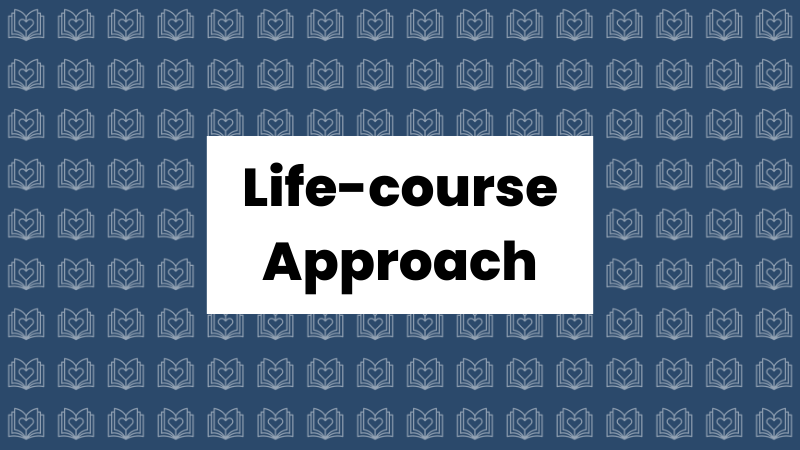
A life-course approach considers an individual’s entire progress throughout life to explain why certain outcomes result. A life-course approach examines how biological (including genetics) social and behavioural factors throughout life and across generations act independently, cumulatively and interactively to influence health outcomes.
Life-course approach to Sexual and Reproductive Health
Across the life-course, women are more likely to be poor, experience violence, have higher rates of illiteracy and innumeracy, acquire a disability, and lack access to adequate nutrition and healthcare. These disparities persist throughout women’s and girls’ lives and, more often than not, intensify with older age. For example, poverty in older age is also linked to the greater likelihood for women than men of living alone, which in turn exacerbates their risk of exploitation, violence, and abuse.
Therefore a comprehensive recognition of women’s human rights must be approached through a life-course perspective. In global public health, this approach knowledge how earlier trauma and barriers to wellness, such as acquiring HIV, experiencing sexual violence, or enduring disrespect and abuse in childbirth, will impact a women’s quality of life as she grows older. A lifecourse perspective also engenders the awareness that many older women choose to be sexually active past their ability to have children, and notes and therefore continue to have sexual health needs. Ageing is also associated with reproductive tissue cancers, such as breast, ovarian, and cervical cancer – the latter of which is the second most common among women in less developed regions worldwide
The limiting constructs of female sexuality and womanhood that prevail in today’s global public health and development discourse, programme and policies, leaving behind nearly one-quarter of the world’s women. Also, In 2016 women aged 50 and older comprise 23.6% of the global female population.Older women living in middle-income and low-income countries comprise the majority of today’s ageing population. Despite their demographic significance, these women remain largely excluded from investment in global public health – including important action on gender-based violence and access to sexual healthcare that construes women’s health through a strictly reproductive lens. Although the experience of ageing varies by culture and regional context, the unequal conditions of older women compared to older men are rooted in gender disparities and transcend geography.
As long as women’s health in the context of global development is concentrated on reproductive activity, only women in certain age will have access to service and care, making the right to bodily autonomy unfilled. Raising the issue that women’s health needs to encompass more than sexual and reproductive health is an important step towards widening the scope of gender-responsive development policy. At the same time, it is crucial to maintain a focus on sexual and reproductive health so that older women (and other marginalized groups of women, such as those with disabilities, and lesbian, bisexual, and trans women), who continue to have a need for these services but are scarcely able to access care, are included in this agenda. This means expanding sexual and reproductive health programming and policies, guided by a sexual rights framework as an alternative to current approaches centered on strict delineations of when reproductive function starts and stops.
What should be done:
- Provide comprehensive sexuality education to all school age children. Although sexuality education is often discussed and evaluated in terms of its role in reducing adolescent pregnancy and STI rates, its primary goal should always be broader: to give young people the opportunity to receive information, examine their values and learn relationship skills that will enable young people become responsible, sexually healthy adults.
- Bridge gaps in services at critical life-course transitions. A prime example of such a gap is the absence of dedicated youth-friendly services. This is often due to the belief that young people should not be sexually active and hence should have no need for SRHR information and services. On the contrary, efforts should be made to make available to adolescents, including unmarried ones, the full range of SRHR services.
- Tackle the stereotyped views of aging and social prejudices that consider older adults asexual or disinterested in sex. Even data collected through Demographic and Health Surveys and health indicators focus primarily on adults of reproductive age 15–49 years. Policy and programmes equally neglect the SRH needs of older adults, including those of LGBTI persons. SRHR in older adults seems to remain a “ ‘blind spot’ in the policy architecture”, excluded from the development agenda and absent from investment frameworks, which are often directed adults of reproductive age and primarily through the lens of maternal health.
WHO: Taking a Life-course Approach to Sexual and Reproductive Health
How to advance SRHR

Currently, one of the main priorities of Finland’s development policy is to promote the rights and status of women and girls. Concretely supporting sexual and reproductive health and rights through development policy means raising their profile in international advocacy, supporting international sexual rights organizations and funding development cooperation that promotes sexual and reproductive health and rights.
Currently the first priority of Finland’s development policy is to promote the status of women and girls, self-determination and sexual and reproductive health. Concretely supporting sexual and reproductive health and rights through development policy means raising their profile in international advocacy, supporting international sexual rights organizations and funding development cooperation that promotes sexual and reproductive health and rights.
Finnish embassies have the opportunity to promote human rights-based development worldwide. Finland has extensive expertise, for example, on the benefits of comprehensive sexuality education and the impact of universal counselling services on sexual and reproductive health.
In its bilateral development cooperation, Finland can make sexual and reproductive health and rights a priority in country programmes, as is currently the case in several countries. In concrete terms, Finland can for example support UNFPA country offices and local NGOs to work on sexual and reproductive health and rights.
Sexual and reproductive health and rights can be emphasized in policy dialogue with partner countries, including support for politically difficult issues such as safe abortion, comprehensive sexuality education and the rights of sexual and gender minorities. Sexual and reproductive health and rights can be emphasized in a variety of contexts, for example in the development of social protection and health systems and the promotion of universal health coverage.
In addition, embassy outreach to local sexual rights organizations is also an important signal to the partner country and its civil society.
In international advocacy and diplomacy, sexual and reproductive health and rights should be raised whenever possible. Ambitious language should be promoted and rights already achieved should be defended in international negotiations.
Everyone can influence the realisation of sexual rights in their own lives. By talking about sexual rights, you influence the atmosphere around you and change attitudes. You can urge decision-makers to make decisions that support sexual rights in Finland and around the world. You can support NGOs and other actors that works towards a realisation of sexual right for all.
